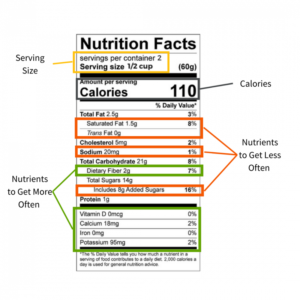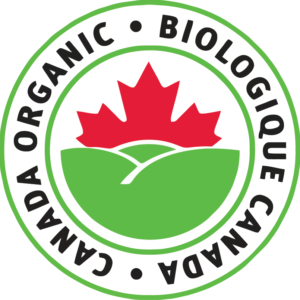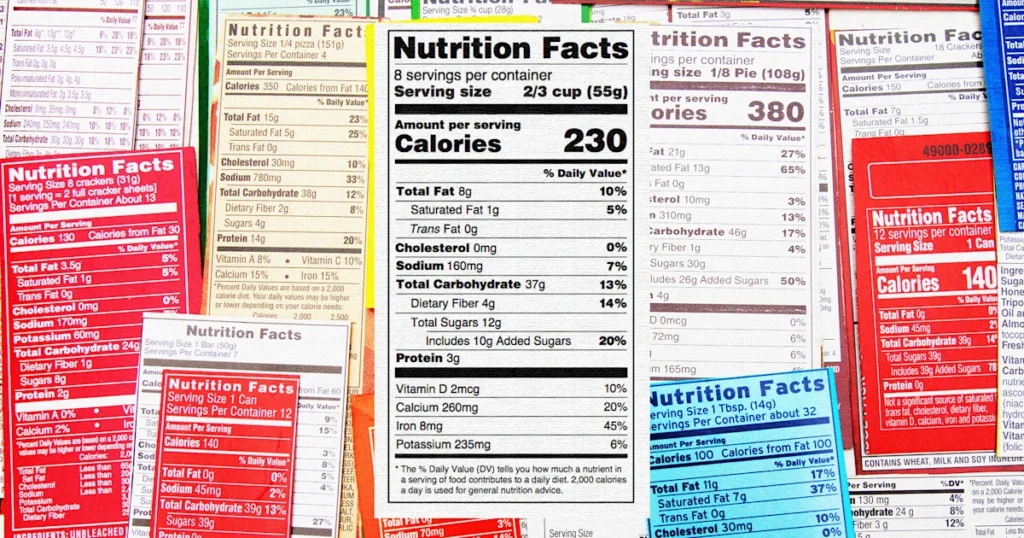How to Read a Nutritional Facts Label
Description
Most nutritional facts tables show the serving size, how many calories in the serving size, amount of nutrients measured in grams (g) and milligrams (mg), per serving size, and percent daily values (%DVs).

1. Serving size: the serving size is a pre-packaged food represents the amount of food typically eaten by consumers in 1 sitting and its base don a referenced amount, therefore it is not a recommendation of how much to eat or drink. Serving sizes make it easier to compare other foods and know the calories and nutrients you are getting from pre-packaged food.
2. Calories: this will tell you how much energy is achieved from one serving of food. Be sure to note how many servings in a package and how many are consumed as the number of calories will increase based on the number of servings.
3. Nutrients to get less often: fat, cholesterol, sodium, and added sugars should be limited especially when the percentages are high (above 5%). Aim to find foods with 0g trans fat
4. Nutrients to get more often: vitamins and minerals such as vitamin D, calcium, iron, potassium, and dietary fibres with 5% or higher are beneficial and essential nutrients.
5. Percent Daily Values: These tell you how much or how little food has based on a 2,000 calorie diet. A good rule of thumb is to keep fat, cholesterol, and sodium at low levels (under 5%), and vitamins and minerals at 15-20%.
Organic Labels: Only foods with 95% or more organic content may carry the Canadian Organic Logo.

Review
Write a ReviewThere are no reviews yet.
